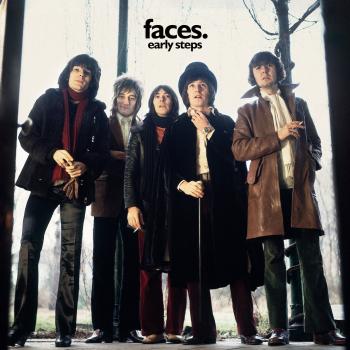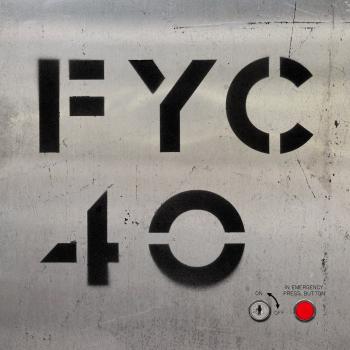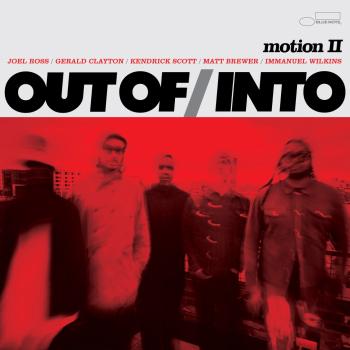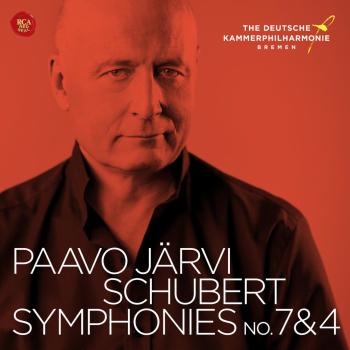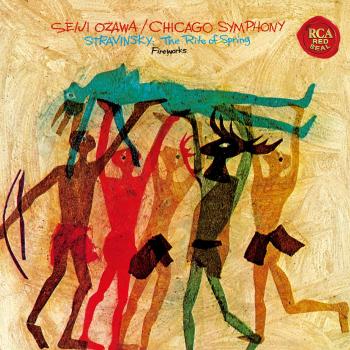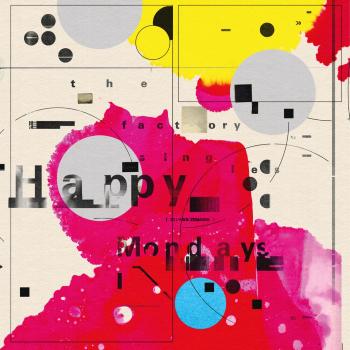
300 Ingolf Wunder
Album info
Album-Release:
2013
HRA-Release:
29.07.2013
Label: Deutsche Grammophon (DG)
Genre: Instrumental
Subgenre: Piano
Artist: Ingolf Wunder
Composer: Domenico Scarlatti (1685-1757), Wolfgang Amadeus Mozart (1756-1791), Frédéric Chopin (1810-1849), Raoul Koczalski (1885-1948), Franz Liszt (1811-1886), Claude Debussy (1862-1918), Nicolai Rimsky-Korsakov (1844-1908), Sergey Vasil'yevich Rachmaninov (1873-1943)
Album including Album cover Booklet (PDF)
I`m sorry!
Dear HIGHRESAUDIO Visitor,
due to territorial constraints and also different releases dates in each country you currently can`t purchase this album. We are updating our release dates twice a week. So, please feel free to check from time-to-time, if the album is available for your country.
We suggest, that you bookmark the album and use our Short List function.
Thank you for your understanding and patience.
Yours sincerely, HIGHRESAUDIO
- Domenico Scarlatti (1685-1757)
- 1 Sonata In B Minor, K. 33 05:25
- Wolfgang Amadeus Mozart (1756-1791)
- 2 Piano Sonata No.13 In B Flat, K.333 - 1. Allegro 07:43
- 3 Piano Sonata No.13 In B Flat, K.333 - 2. Andante cantabile 06:51
- 4 Piano Sonata No.13 In B Flat, K.333 - 3. Allegretto grazioso 06:24
- Frédéric Chopin (1810-1849)
- 5 Berceuse In D Flat, Op.57 - Andante 04:39
- Raoul Koczalski (1885-1948)
- 6 Valse Fantaisie, Op.49 03:04
- Franz Liszt (1811-1886)
- 7 Czardas Macabre S.224 07:50
- Claude Debussy (1862-1918)
- 8 Clair de lune from Suite bergamasque, L. 75 - 3. 05:18
- Nicolai Rimsky-Korsakov (1844-1908)
- 9 The Flight Of The Bumble-Bee from The Tale Of Tsar Saltan 01:17
- Sergey Vasil'yevich Rachmaninov (1873-1943)
- 10 10 Preludes, Op.23 - No.5 In G Minor 03:50
- Alexander Scriabin (1872-1915)
- 11 12 Etudes For Piano, Op.8 - No. 12 In D Sharp Minor 02:14
- Moritz Moszkowski (1854-1925)
- 12 Étincelles, Morceau caractéristique Op.36, No.6 - Allegro scherzando 02:57
- Vladimir Horowitz (1904-1989)
- 13 Danse excentrique (Moment exotique) 02:34
- Wolfgang Amadeus Mozart (1756-1791)
- 14 3. Alla Turca (Allegretto) from Mozart’s Sonata in A major K 331 03:42
- Ennio Morricone (1928)
- 15 Playing Love from the film The Legend of 1900 03:04
- John Williams (1932)
- 16 Main Title from Star Wars 05:50
Info for 300
Music changes our lives through fortuitous, felicitous and often inexplicable encounters. It was relatively late that I came to my own particular instrument and, without the works from 300 years of piano music collected together in the present release, there is no doubt that my career would have looked very different. Each of these pieces is especially close to my heart, and all of them have fascinated me from an early date, so much so, indeed, that they made me want to become a pianist. Some of them are short, very popular pieces, while others are out-of-the-way compositions or new arrangements of existing works. What they all have in common is that they have survived the passage of time and remain intrinsically good, no matter what angle we may view them from. But 300 is a magic number for me in other respects, for this season sees me making my 300th appearance as a pianist. It is an anniversary that I should like to share with my public through the medium of this recording. (Ingolf Wunder)
Mozart, Chopin, Liszt, Moszkowski and Rachmaninov were all highly gifted as pianists. Their works not only reveal their instrument at the very peak of its possibilities but also showcase their performers’ technical brilliance, eye for proportional balance and ability to build to an emotional climax. In this regard they resemble the virtuoso piano versions of Rimsky-Korsakov’s Flight of the Bumblebee and John Williams’s music for Star Wars. For Ingolf Wunder this repertory represents what he calls “an island of retreat” and a way of acquiring a specific manner of looking at the present and at its challenges. “How long does one have to wait for this or that melody? How does one structure the tiniest tempo changes? And how does all of this produce a single entity? If you take your time and devote your attention to all of these details, you find yourself in a world that seems to be infinite.”
It is not surprising, therefore, that the young Austrian pianist begins his journey through the keyboard music of the past 300 years with a sonata miniature by Domenico Scarlatti, a calming piece of music that proceeds at a deliberate pace and “touches the deepest recesses of my soul”. This same emotional world is inhabited by the “dreamily singing” middle movement of Mozart’s Piano Sonata in B flat major K 333, sometimes called the “Linz” Sonata and a work as well known for its brilliant passage-work as for its graceful opening, which has so little in common with the self-assurance of the usual first subject of a sonata movement.
Only gradually does Ingolf Wunder approach the works of the great virtuosos of the 19th century, Frédéric Chopin and Franz Liszt. The two men were introduced to one another in Paris around 1830 and, although Chopin tended to perform in private salons, while Liszt preferred the public concert hall, they remained close friends for many years: the first a “Raphael of the fortepiano”, as Heinrich Heine called him admiringly, the other described by Robert Schumann as a “godlike figure to whom we listen on bended knee”. Chopin’s Berceuse is arguably the most famous lullaby ever written for the piano and describes a child falling asleep.
According to Ingolf Wunder, the child “feels safe and protected as it is endlessly rocked to and fro”. The tenderness and delicacy of the Berceuse give no hint of its cool construction, an essential element of which is the “total separation of the hands”: over a simple and unchanging figure in the left hand, the right hand spins a web of expansive arabesques.
One of the few pupils of Chopin who later became a professional pianist in his own right was Karol Mikuli, with whom the Polish child prodigy Raoul Koczalski studied in the early 1890s, remaining an authority on Chopin’s music until the end of his life. He himself wrote late Romantic, almost Impressionist piano pieces, including the brief waltz heard here, a piece notable – in Ingolf Wunder’s words – for its “immortal, heart-rending” melody. There could hardly be a greater contrast than with the Csárdás macabre that Liszt wrote in Budapest in 1881. Ghostly octaves launch what Wunder calls a “demonic journey into a world of derision and abnormality”, as the misleading joy of the csárdás alternates with a destructive din, before the large-scale final section demands the greatest technical mastery.
Debussy’s “Clair de lune” from his Suite bergamasque for piano provides only the briefest of respites before we hear a piece that continues to attract musicians of every kind keen to demonstrate their abilities on their respective instruments. Rimsky-Korsakov’s Flight of the Bumblebee was originally no more than an interlude in one of his great operas but now exists in countless arrangements, including ones for flute, oboe, tuba, violin, vibraphone and, of course, the piano. Ingolf Wunder describes this as “programme music of a textbook kind”. He performs it here in a transcription by Rachmaninov, who studied with a teacher who had himself studied with one of Liszt’s pupils. Scurrying scales played with the lightest of touches are among the most challenging demands that can be placed on a pianist. “Theoretically,” says Ingolf Wunder, “a bumblebee shouldn’t even be able to fly, but with this transcription one can at least try to defy the laws of physics, just as nature does with the bee.”
Wunder returns one more to Rachmaninov, that king of the keyboard, whose Prelude from op. 23 breathes the same power and delivers the same emotional charge as the study by Alexander Scriabin that was written only a short time afterwards. And what of the brief Étincelles (“Sparks”) by Moritz Moszkowski, a musician regarded as the leading salon composer of his day? Ingolf Wunder calls it “a stroke of genius”. Like Scarlatti’s sonatas, Moszkowski’s miniatures are ideally suited for performance as encores. Vladimir Horowitz, for example, repeatedly played them at his legendary concerts and may even have been inspired by them to write his own Danse excentrique, investing it with what Ingolf Wunder calls its “whiff of 1920s silent films and a whole host of irony”. As for Arcadi Volodos’s insanely difficult transcription of Mozart’s Rondo “alla turca” that Wunder regularly plays as an encore at his own concerts, it is, he says, “a successful continuation of the school of modern pianism”, a school that Horowitz himself helped to establish.
Ingolf Wunder ends the present recital with works by two film composers, Ennio Morricone and John Williams, inviting his listeners “to relegate the film to the background and concentrate just on the music, music that is simply magnificent”. (Christian Eggers)
"Wunder's elegance and poetic intelligence makes him perhaps one of the most well-rounded talent among them. Many pianists can play the kind of scintillating Scarlatti heard on his new album Ingolf Wunder 300, but almost none of them play Mozart sonatas in ways so relaxed and genial -- and with such an ingratiating legato." (David Patrick Stearns, ArtsJournal.com)
"...[an] inspired solo piano arrangement of John Williams' "Star Wars" theme -- which has to be heard to be believed!" (Anne-Marie Minhall, Classic FM London)
"...it's the unadorned Mozart Sonata in B-flat, K. 333 that reveals Wunder's real gift, a limpid, unforced melodic line filled with charm. Wunder's name means miracle in German -- an apt moniker for playing this "wunderbar"." (Tom Huizenga, NPR Washington)
Ingolf Wunder, piano
Ingolf Wunder
achieved worldwide recognition at the 2010 International Chopin Piano Competition in Warsaw, winning Second Prize and several special awards including the Best Prize for Concerto and the Best Prize for Polonaise-Fantasy. As a prize-winner in this competition, Wunder follows in the footsteps of many of the world's most famous musicians including Martha Argerich, Krystian Zimerman, Vladimir Ashkenazy, Mitsuko Uchida and Maurizio Pollini.
Born in Austria, Ingolf Wunder started his musical education playing the violin at the age of 4; however it was years later that his talent for the piano was discovered. He went to conservatories in Klagenfurt and Linz, later studying at the University of Music and Performing Arts in Vienna. He remains in regular contact with his mentor Adam Harasiewicz, the Polish pianist and winner of the 1955 Chopin Piano Competition. Aged 14, Wunder made his debut in the Schubert hall of the Wiener Konzerthaus. Two years later he performed Prokofiev’s Piano Concerto No. 3 at the Théâtre des Champs-Élysées in Paris with the Orchestre National de France and Emmanuel Krivine.
Since then he has performed extensively throughout Europe, Asia and America at venues such as the Tonhalle Zurich, Musikverein Vienna, Wiener Konzerthaus, Laeiszhalle Hamburg, Konzerthaus Berlin and at festivals such as La Roque d'Anthéron, Ruhr Piano Festival and Schubertiade Hohenems. 2011 saw a highly successful tour of Japan with the Warsaw Philharmonic Orchestra under Antoni Wit, followed by recitals in St. Petersburg, Virginia and Vancouver.
In the 2012/13 season Ingolf Wunder will perform with orchestras such as the hr-Sinfonieorchester, NHK Symphony Orchestra, Wiener Symphoniker under the baton of Kazushi Ono and Rundfunk-Sinfonieorchester Berlin with Kazuki Yamada. He returns to Warsaw Philharmonic for concerts with Antoni Wit. In recital he performs at Festspielhaus Baden-Baden, Conservatoire de Musique Geneva, Wiener Konzerthaus, Musikverein, Berlin Philharmonie, Munich Prinzregententheater, Stuttgart Liederhalle and Warsaw Philharmonic Concert Hall amongst others.
Ingolf Wunder records exclusively for Deutsche Grammophon. His first recording, a Chopin recital recording, was released in June 2011. In summer 2012 he recorded his second solo album ("300") which will be released in January 2013.
Ingolf Wunder has previously won several other competitions – amongst them Turin (European Music), Hamburg (Steinway), Feldkirch (“Prima la musica”), Asti (Concours Musical de France), Casarza (“VI Trofeo Internazionale”) and Budapest (Liszt).
Booklet for 300



